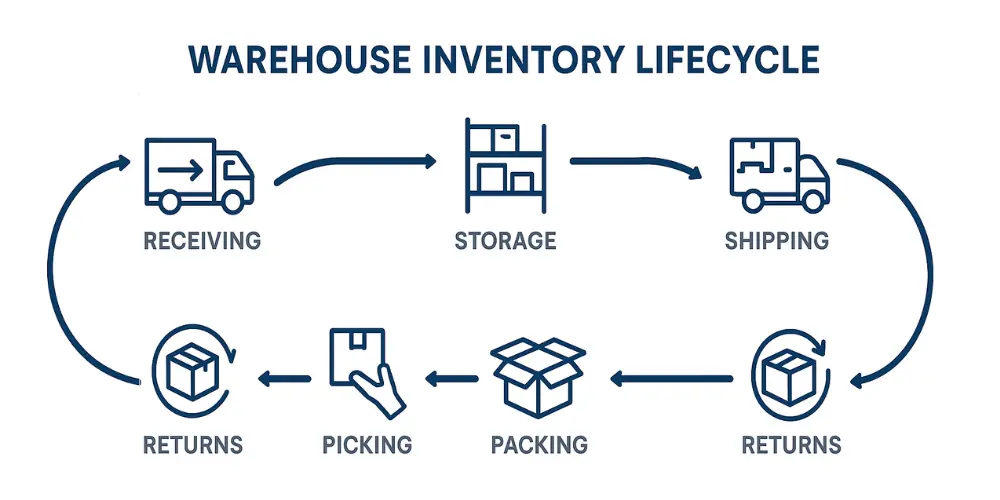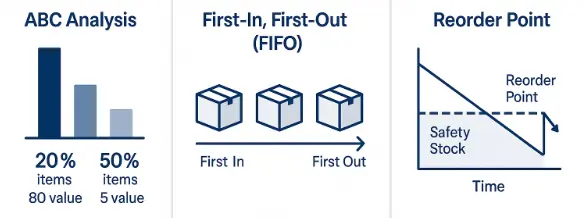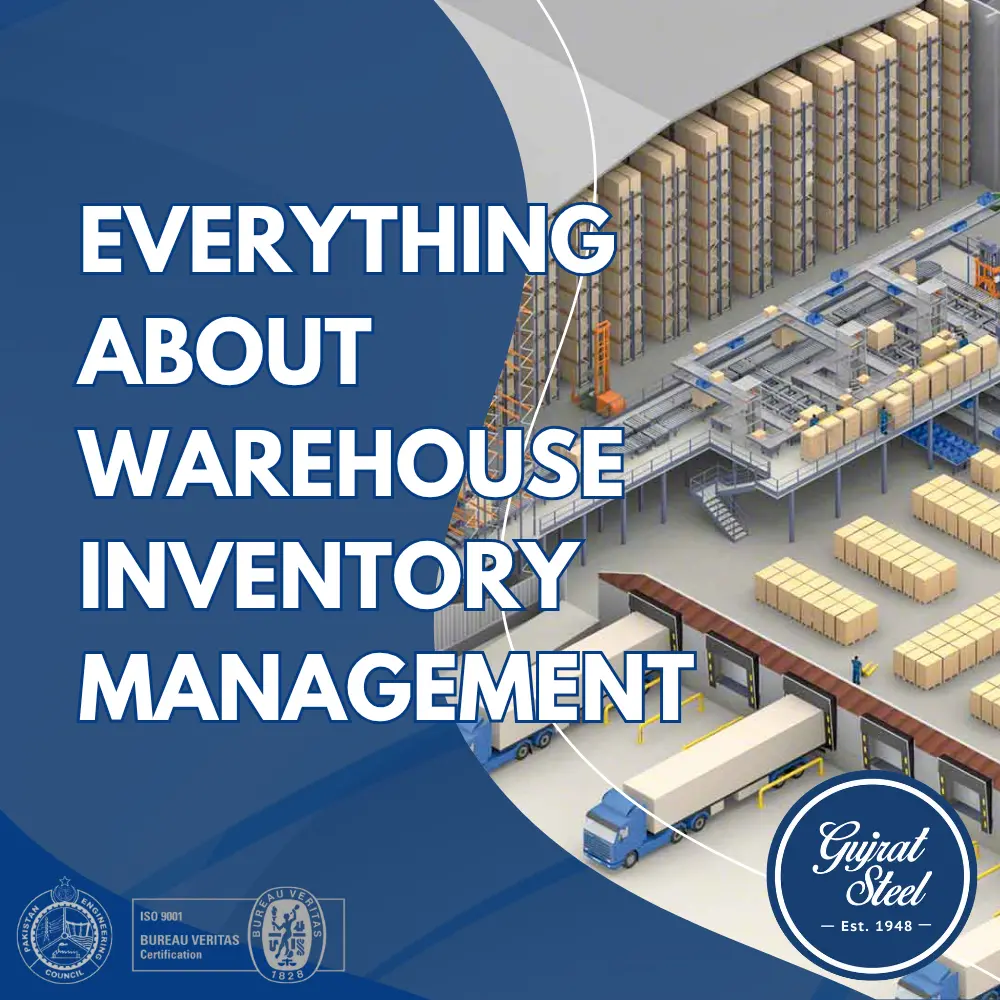Warehouse inventory management is a vast and critical field that forms the backbone of the supply chain. Here is an in-depth, comprehensive guide covering its principles, processes, techniques, and technology.
Table of Contents
What is Warehouse Inventory Management?
At its core, warehouse inventory management is the systematic process of sourcing, storing, tracking, managing, and controlling all the goods and materials held within a warehouse. It encompasses every touchpoint of an item’s journey, from the moment it arrives at the receiving dock to the moment it is shipped out to a customer.
The ultimate goal is to have the right product, in the right quantity, in the right condition, at the right place, and at the right time to meet customer demand while minimizing costs.
Why is Effective Inventory Management So Important?
Ineffective inventory management can cripple a business. Getting it right provides a massive competitive advantage.
- Improved Cash Flow: Inventory is cash sitting on a shelf. Effective management ensures you aren’t overstocking, which ties up capital that could be used elsewhere.
- Reduced Costs: It minimizes holding costs (cost of storage space, insurance, labor), obsolescence costs (products expiring or becoming outdated), and stockout costs (lost sales from not having a product).
- Increased Efficiency and Productivity: An organized system means workers spend less time searching for items, leading to faster order fulfillment and more orders shipped per day.
- Enhanced Customer Satisfaction: Having the right products in stock means fewer backorders and faster shipping times, leading to happier, more loyal customers.
- Better Forecasting and Decision-Making: Accurate, real-time inventory data allows you to better predict future demand, identify slow-moving items, and make informed purchasing decisions.
The Core Processes: The Lifecycle of Inventory in a Warehouse

These are the fundamental, step-by-step activities involved in managing inventory.
Receiving:
This is the first and one of the most critical steps.
- Process: Inbound shipments are unloaded. Items are inspected for damage and verified against the purchase order (PO) to ensure the quantity and type of product are correct.
- Importance: Any errors here (e.g., accepting a damaged shipment or logging the wrong quantity) will create problems that cascade through the entire system.
Put-Away:
Once received and verified, inventory must be moved to its designated storage location.
- Process: Workers transport items from the receiving dock to a specific bin, shelf, or pallet location. A Warehouse Management System (WMS) often directs this process for maximum efficiency.
- Importance: Fast and accurate put-away makes inventory available for sale sooner and ensures it can be found easily later.
Storage:
This is the physical holding of inventory.
- Process: Inventory is stored in a way that maximizes space, ensures safety, and facilitates easy access. This involves using appropriate racking, shelving, and bin systems.
- Importance: Proper storage prevents product damage, improves warehouse organization, and increases storage density.
Order Picking:
This is typically the most labor-intensive and costly process in a warehouse.
Process:
Workers retrieve the specific items needed to fulfill customer orders. There are several picking strategies:
- Piece Picking: One order at a time. Simple but inefficient.
- Batch Picking: Picking items for multiple orders at once. Reduces travel time.
- Zone Picking: Each worker is assigned a zone and only picks items from that area.
- Wave Picking: A combination of zone and batch picking, scheduled in specific “waves.”
Importance:
The speed and accuracy of picking directly impact customer satisfaction and labor costs.
Packing and Staging:
- Process: Picked items are brought to a packing station where they are checked for accuracy, packed securely into appropriate boxes with filler material, and labeled for shipping. The packed orders are then moved to a staging area to await carrier pickup.
- Importance: Proper packing prevents damage during transit, and an organized staging area prevents shipping errors.
Shipping:
The final step in the outbound process.
- Process: Packed orders are loaded onto the correct carrier’s truck. The inventory management system is updated to reflect that the items have left the warehouse.
- Importance: Ensures customers receive the correct order on time.
Returns Management (Reverse Logistics):
- Process: Handling products returned by customers. This involves inspecting the item, determining if it can be resold, refurbished, or discarded, and updating inventory records accordingly.
- Importance: An efficient returns process can recover value from returned goods and maintain customer satisfaction.
Key Inventory Management Techniques and Methods

These are the strategies used to optimize the processes above.
ABC Analysis:
A method of categorizing inventory into three groups based on value and sales frequency, inspired by the Pareto Principle (80/20 rule).
- A-Items: Top 20% of items that account for ~80% of revenue. These are high-priority. They get prime, easy-to-access storage locations and are counted more frequently.
- B-Items: Mid-range items of moderate importance.
- C-Items: The bulk of items (~50%) that account for only a small portion of revenue. These can be stored in less accessible areas.
First-In, First-Out (FIFO):
A principle where the oldest stock is sold first. This is essential for perishable goods (food, pharmaceuticals) or products with a limited shelf life (electronics, cosmetics) to prevent spoilage and obsolescence.
Just-In-Time (JIT) Inventory:
A strategy where materials are ordered from suppliers to arrive just as they are needed for production or order fulfillment. This drastically reduces inventory holding costs but requires a highly reliable and predictable supply chain.
Cycle Counting:
Instead of a massive, disruptive annual physical count, cycle counting involves counting small, specific sections of inventory on a daily or weekly basis. This maintains high inventory accuracy year-round without shutting down operations.
Safety Stock & Reorder Points:
- Safety Stock: A buffer inventory held to protect against stockouts caused by unexpected demand spikes or supplier delays.
- Reorder Point: The specific inventory level at which a new order must be placed to replenish stock before it runs out. The formula is typically: (Average Daily Usage x Average Lead Time in Days) + Safety Stock.
The Role of Technology in Modern Inventory Management
Technology is no longer a luxury; it’s a necessity for efficient warehouse operations.
Warehouse Management System (WMS):
This is the central software brain of the warehouse. It provides real-time visibility into all inventory, directs all processes from put-away to picking, optimizes travel paths, and integrates with other business systems.
Barcoding & RF Scanners:
These technologies eliminate manual data entry. By scanning barcodes on products and locations, workers can update the WMS instantly and with near-perfect accuracy.
Automation:
- Conveyors and Sorters: Automatically move and sort items, reducing manual handling.
- Automated Storage and Retrieval Systems (AS/RS): High-density robotic systems that automatically store and retrieve totes or pallets.
- Autonomous Mobile Robots (AMRs): Robots that can navigate the warehouse to transport goods to pickers or move completed orders to packing stations.
Essential KPIs (Key Performance Indicators) to Measure Success
You can’t improve what you don’t measure. Key metrics include:
- Inventory Accuracy: How closely your system’s records match the physical inventory. The goal is 99%+.
- Inventory Turnover: How many times inventory is sold and replaced over a period. (Formula: Cost of Goods Sold / Average Inventory). A high number is generally good.
- Order Picking Accuracy: The percentage of orders picked without errors.
- Carrying Cost of Inventory: The total cost of holding inventory, usually expressed as a percentage of inventory value.
- Backorder Rate: The percentage of orders that cannot be filled at the time of purchase.
Conclusion
Effective warehouse inventory management is a dynamic and multifaceted discipline. It is a continuous cycle of planning, executing, and analyzing, all powered by a strategic blend of well-defined processes, smart techniques, and modern technology to achieve a lean, accurate, and highly responsive supply chain.



